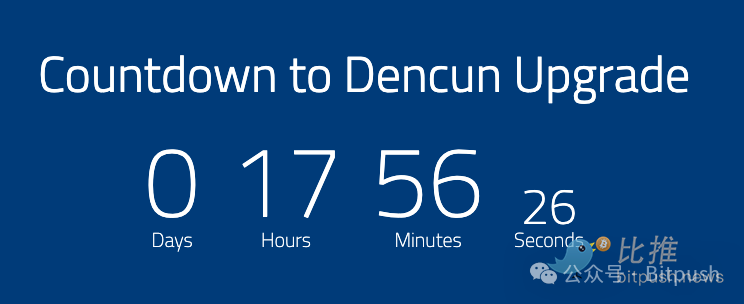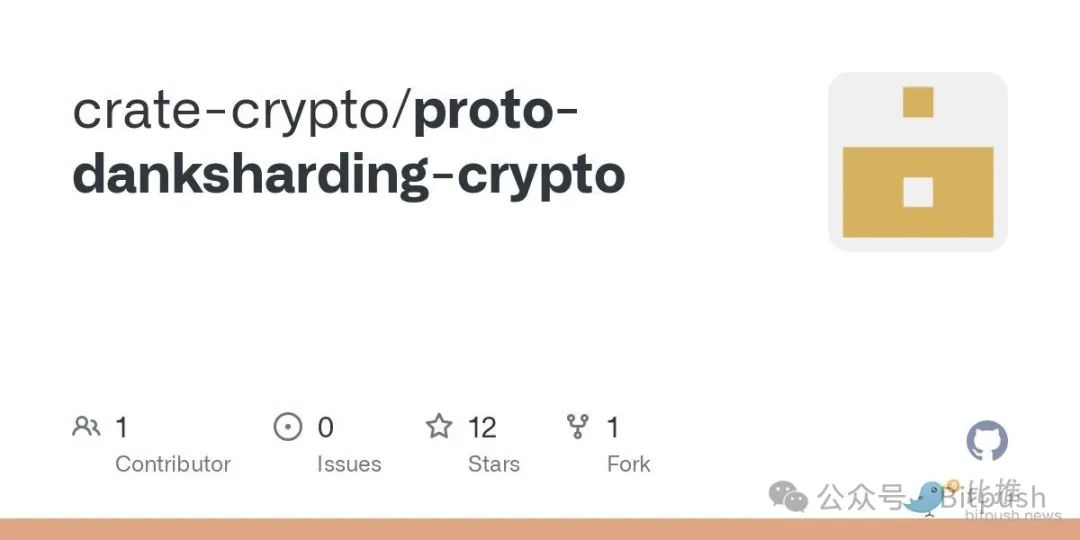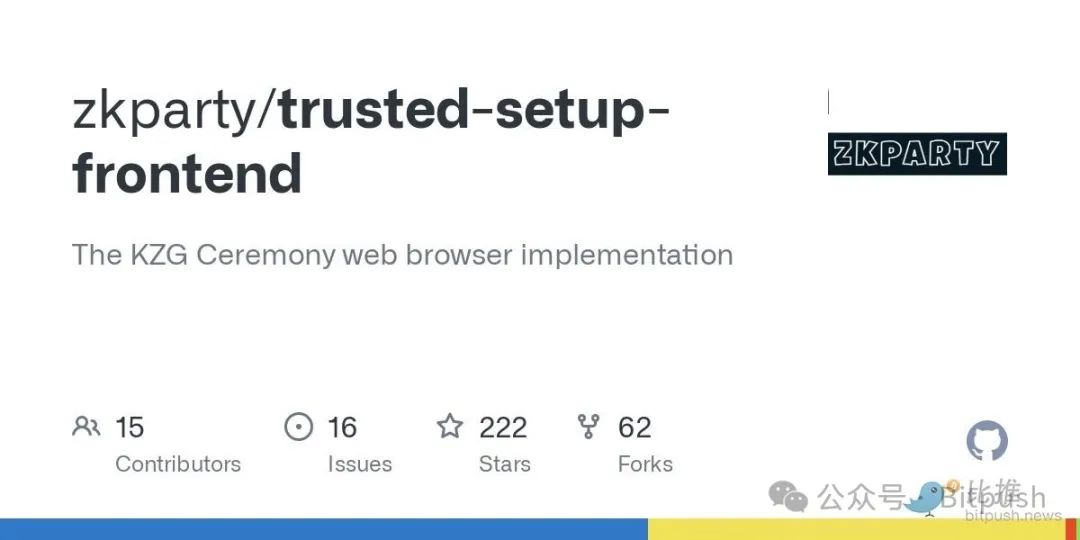 web3.0
web3.0
 Countdown to Dencun: Re-understand the latest and most important upgrade of Ethereum in one article
Countdown to Dencun: Re-understand the latest and most important upgrade of Ethereum in one article
Countdown to Dencun: Re-understand the latest and most important upgrade of Ethereum in one article
Source: Coindesk
Compiled by: BitpushNews Mary Liu
Ethereum’s Dencun upgrade plan is expected to be launched at approximately 9:55 a.m. Eastern Time on March 13. This upgrade, called "proto-danksharding" or EIP-4844, will bring a new, more economical era to auxiliary networks (L2/Rollup) running on Ethereum. New Ethereum Improvement Proposals (EIPs) will be activated, providing users with lower fees and bringing more efficient operation to the entire Ethereum ecosystem. This upgrade is regarded as an important milestone in the development of the Ethereum network and is expected to bring more advantages and opportunities to users and developers. This move will help promote the development of blockchain technology, accelerate the popularization and application of digital assets, and provide a solid foundation for the entire cryptocurrency.

Dencun’s naming was inspired by Deneb and The combination of the two words Cancun symbolizes two important upgrades carried out simultaneously on the consensus layer and execution layer of Ethereum. This update will be one of the most significant updates to Ethereum since the Shapella upgrade in April 2023.
Proto-danksharding
Dencun will introduce Proto-Danksharding, a long process of transitioning from theory to practice (first mentioned by Vitalik Buterin in 2019), which changes the way Ethereum stores data The way.

Dencun adopts a new temporary way to store "blob" data instead of saving it directly on the immutable execution layer of the Ethereum main network, which is more cost-effective . While "blob" may sound unfamiliar, it's actually a common concept in computer science. Similar data management blobs also exist in programming languages such as Javascript and Python.
Proto-danksharding is Ethereum’s first attempt at “sharding” technology. This approach breaks the blockchain into small pieces, called mini-shards or mini-chains, designed to process more transactions more cost-effectively.
Although the final version of sharding is still a few years away, Proto-danksharding can help solve Ethereum’s high gas fees in the short term by reducing the fees on the L2 network.
Proto-Danksharding origin?
Proto-Danksharding is named after two Ethereum researchers, Dankrad Feist and Proto Lambda, who proposed the change.
Proto-Danksharding is a necessary condition for the full rollout of Danksharding, which will further simplify data storage and will take several years to achieve.
Also, despite the word "sharding" in the name, neither Danksharding nor Proto-Danksharding is a tradition of "sharding" (or splitting) a database into smaller parts as known in computer science method (the original plan for Ethereum expansion). In a sense, Dencun's introduction of Proto-Danksharding was a serious departure from Ethereum's original roadmap, and it was chosen because it was easier to implement.

The first step in establishing Proto-Danksharding took place in 2022 – the largest “Trusted Setup” ceremony at the time. Named after the researchers (Aniket Kate, Gregory M. Zaverucha, and Ian Goldberg) who created key components of blob storage on Ethereum, thousands of people attended the KZG ceremony, which was collectively generated by the Ethereum community Raw danks are a way of sharding the secret string of random data needed to work.
In the gas-free era of Ethereum, which sectors will benefit the most?
Dencun will make L2 transactions super cheap - almost cost-free, which will push almost all activities on Ethereum to switch to these networks, some projects or protocols may do so by consuming the Gas that users would normally have to bear Fees to incentivize usage (cheaper than paying for marketing!).
After Dencun, L2 will be able to publish data to Ethereum within a dedicated blob space, rather than being forced to pay the higher cost of compressing the data into traditional transactions. In theory, this could help L2 process more data more efficiently, thus reducing costs for end users.
Layer 2 networks such as Arbitrum, Optimism and Polygon will benefit the most from Dencun. These networks help scale Ethereum by bundling users’ transactions and then passing them to Ethereum, where they are settled in bulk. Over the past year, they have become the dominant platform for trading on Ethereum, amassing multi-billion dollar pools and consistently boasting higher transaction volumes than the main Ethereum chain.
Proto-danksharding will also benefit a new class of blockchains entering the competition with Ethereum, called the data availability (DA) layer.
DA layers such as Celestia, EigenDA, and Avail help networks store large amounts of data; L2 often uses them to store transaction data. Proto-danksharding can reduce the cost of downloading DA data.
Polygon co-founder Jordi Baylina previously said, “The cost should be lower, mainly because it is a supply and demand issue. Your supply is larger and the data availability on Ethereum will be greater, so the cost should be lower. .How much? We don’t know, it’s hard to predict.”
Optimism Karl Floersch, CEO of OP Labs, a major web development company, said: “Scalability is the fundamental unlock that enables permissionless collaboration between developers across projects and teams. With EIP-4844 and Dencun, the entire Developers in the Ethereum ecosystem can build together more seamlessly."
He said the upgrade "will enable a loosely coordinated group of developers to truly build systems that deliver holistic experiences that will Subvert the top-down, centrally planned platform user experience that we were used to before."
L2 Transaction Data
According to L2Beat data, the average transaction volume per second (TPS) of the L2 network in the past seven days was 93.18, while the average transaction volume per second (TPS) of Ethereum was 14.42 , the L2 Scaling Factor multiple is approximately 8.36.

L2fees’ data also shows that the average cost of sending ETH on Arbitrum is $0.24 and the cost of exchanging tokens is $0.67. Optimism costs $0.47 and $0.92 respectively, while Polygon costs $0.78 and $2.85.
Fidelity’s report on this upgrade pointed out that L2 fees account for approximately 10% of the total L1 fees. The money manager said the ratio is expected to "decline significantly" following the upgrade.
After Dencun, Ethereum developers will begin to address content for the next upgrade, now called Electra Prague (Petra).
As of now, the developers have not decided what will be included in the package, but one of the most recognized upgrades is called "Verkle Trees", a new type of data category that helps node storage Large amounts of data. The development of VerkleTrees is ongoing, and Buterin has stated that individual stakers and network nodes of Ethereum will benefit from the deployment of VerkleTrees.
The above is the detailed content of Countdown to Dencun: Re-understand the latest and most important upgrade of Ethereum in one article. For more information, please follow other related articles on the PHP Chinese website!

Hot AI Tools

Undresser.AI Undress
AI-powered app for creating realistic nude photos

AI Clothes Remover
Online AI tool for removing clothes from photos.

Undress AI Tool
Undress images for free

Clothoff.io
AI clothes remover

AI Hentai Generator
Generate AI Hentai for free.

Hot Article

Hot Tools

Notepad++7.3.1
Easy-to-use and free code editor

SublimeText3 Chinese version
Chinese version, very easy to use

Zend Studio 13.0.1
Powerful PHP integrated development environment

Dreamweaver CS6
Visual web development tools

SublimeText3 Mac version
God-level code editing software (SublimeText3)

Hot Topics
 1378
1378
 52
52
 okx Ouyi Exchange web version enter link click to enter
Mar 31, 2025 pm 06:21 PM
okx Ouyi Exchange web version enter link click to enter
Mar 31, 2025 pm 06:21 PM
1. Enter the web version of okx Euyi Exchange ☜☜☜☜☜☜ Click to save 2. Click the link of okx Euyi Exchange app ☜☜☜☜ Click to save 3. After entering the official website, the clear interface provides a login and registration portal. Users can choose to log in to an existing account or register a new account according to their own situation. Whether it is viewing real-time market conditions, conducting transactions, or managing assets, the OKX web version provides a simple and smooth operating experience, suitable for beginners and veterans. Visit OKX official website now for easy experience
 gate.io registration tutorial
Mar 31, 2025 pm 11:09 PM
gate.io registration tutorial
Mar 31, 2025 pm 11:09 PM
This article provides a detailed Gate.io registration tutorial, covering every step from accessing the official website to completing registration, including filling in registration information, verifying, reading user agreements, etc. The article also emphasizes security measures after successful registration, such as setting up secondary verification and completing real-name authentication, and gives tips from beginners to help users safely start their digital asset trading journey.
 What is Ouyi for? What is Ouyi
Apr 01, 2025 pm 03:18 PM
What is Ouyi for? What is Ouyi
Apr 01, 2025 pm 03:18 PM
OKX is a global digital asset trading platform. Its main functions include: 1. Buying and selling digital assets (spot trading), 2. Trading between digital assets, 3. Providing market conditions and data, 4. Providing diversified trading products (such as derivatives), 5. Providing asset value-added services, 6. Convenient asset management.
 How to roll positions in digital currency? What are the digital currency rolling platforms?
Mar 31, 2025 pm 07:36 PM
How to roll positions in digital currency? What are the digital currency rolling platforms?
Mar 31, 2025 pm 07:36 PM
Digital currency rolling positions is an investment strategy that uses lending to amplify trading leverage to increase returns. This article explains the digital currency rolling process in detail, including key steps such as selecting trading platforms that support rolling (such as Binance, OKEx, gate.io, Huobi, Bybit, etc.), opening a leverage account, setting a leverage multiple, borrowing funds for trading, and real-time monitoring of the market and adjusting positions or adding margin to avoid liquidation. However, rolling position trading is extremely risky, and investors need to operate with caution and formulate complete risk management strategies. To learn more about digital currency rolling tips, please continue reading.
 ok official portal web version ok exchange official web version login portal
Mar 31, 2025 pm 06:24 PM
ok official portal web version ok exchange official web version login portal
Mar 31, 2025 pm 06:24 PM
This article details how to use the official web version of OK exchange to log in. Users only need to search for "OK Exchange Official Web Version" in their browser, click the login button in the upper right corner after entering the official website, and enter the user name and password to log in. Registered users can easily manage assets, conduct transactions, deposit and withdraw funds, etc. The official website interface is simple and easy to use, and provides complete customer service support to ensure that users have a smooth digital asset trading experience. What are you waiting for? Visit the official website of OK Exchange now to start your digital asset journey!
 How to calculate the transaction fee of gate.io trading platform?
Mar 31, 2025 pm 09:15 PM
How to calculate the transaction fee of gate.io trading platform?
Mar 31, 2025 pm 09:15 PM
The handling fees of the Gate.io trading platform vary according to factors such as transaction type, transaction pair, and user VIP level. The default fee rate for spot trading is 0.15% (VIP0 level, Maker and Taker), but the VIP level will be adjusted based on the user's 30-day trading volume and GT position. The higher the level, the lower the fee rate will be. It supports GT platform coin deduction, and you can enjoy a minimum discount of 55% off. The default rate for contract transactions is Maker 0.02%, Taker 0.05% (VIP0 level), which is also affected by VIP level, and different contract types and leverages
 What are the recommended websites for virtual currency app software?
Mar 31, 2025 pm 09:06 PM
What are the recommended websites for virtual currency app software?
Mar 31, 2025 pm 09:06 PM
This article recommends ten well-known virtual currency-related APP recommendation websites, including Binance Academy, OKX Learn, CoinGecko, CryptoSlate, CoinDesk, Investopedia, CoinMarketCap, Huobi University, Coinbase Learn and CryptoCompare. These websites not only provide information such as virtual currency market data, price trend analysis, etc., but also provide rich learning resources, including basic blockchain knowledge, trading strategies, and tutorials and reviews of various trading platform APPs, helping users better understand and make use of them
 Official website entrance of major digital currency trading platforms 2025
Mar 31, 2025 pm 05:33 PM
Official website entrance of major digital currency trading platforms 2025
Mar 31, 2025 pm 05:33 PM
This article recommends ten mainstream cryptocurrency exchanges, including Binance, OKX, Sesame Door (gate.io), Coinbase, Kraken, Bitstamp, Gemini, Bittrex, KuCoin and Bitfinex. These exchanges have their own advantages, such as Binance is known for its largest trading volume and rich currency selection in the world; OKX provides innovative tools such as grid trading and a variety of derivatives; Coinbase focuses on US compliance; Kraken attracts users for its high security and pledge returns; other exchanges have their own characteristics in different aspects such as fiat currency trading, altcoin trading, high-frequency trading tools, etc. Choose an exchange that suits you, and you need to use your own investment experience


